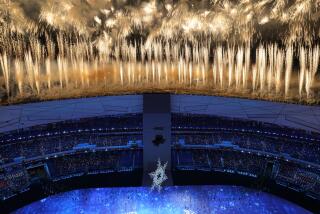The best of two worlds
For anyone who slept through the 2008 Summer Olympics in Beijing or who still has a shadow of doubt about China’s arrival as a global power, consider the 2010 Shanghai Expo. Like just about everything to do with China, this is big, bigger, biggest. A country that sent a dozen boxes of silk to the very first world’s fair in London in 1851 is now hosting the world’s largest exposition on fairgrounds twice the size of Disneyland, with 190-plus nations participating and hundreds of thousands of visitors a day for six months, or about 70 million expected by the close on Oct. 31.
A world’s fair allows countries to showcase their national character and ambition, but also reveals their circumstances. In this case, the Chinese government dug into its communist coffers for about $50 billion to double the size of Shanghai’s subway and add airport terminals, rail lines and other infrastructure, all while building its own national pavilion, an inverted pyramid painted Forbidden City red. And the United States, faced with congressional refusal to pony up and a global economic crisis, scraped together just $61 million from corporate donors to fund its cineplex-like venue.
Under the expo’s theme, “Better City, Better Life,” both countries offer their idealized visions of harmonious societies, a window into each culture minus, of course, any mention of wars in Iraq and Afghanistan or tensions over Tibet. The highlight of the Chinese exhibit is an animated version of an ancient painted scroll titled “Riverside Scene at Qingming Festival.” Think Harry Potter meets Song Dynasty: The people and horses come alive on canvas in rich amber tones. Images of the good urban life are projected on another wall, where viewers peer into the windows of an apartment building to see nine middle-class families eat, play and struggle to assemble IKEA-like furniture.
The U.S. exhibit has its bells and whistles too. Seats move, and it rains in one theater — pretty cool. One film shows Americans attempting to learn Chinese and making fun of themselves in the process; another is about a young girl who brings her multiethnic neighbors together to plant a community garden. They seek to demonstrate American values such as openness and civic spirit, but the pavilion is so loaded with corporate logos that the messages are nearly lost to branding by Chevron, General Electric and others. A film made by Pepsi airs in the Citicorp room, which exits into the Disney Store.
Not that the tourists seem to mind. The vast majority are Chinese, well-dressed in their brand-name clothes, fiddling with cellphones and snapping pictures with their cameras as they wait in line for hours to enter the Chinese and U.S. pavilions. But if that doesn’t sound appealing, fear not. For the impatient expo visitor, there’s always the North Korean exhibit. No wait there.
— Marjorie Miller
More to Read
Sign up for Essential California
The most important California stories and recommendations in your inbox every morning.
You may occasionally receive promotional content from the Los Angeles Times.









